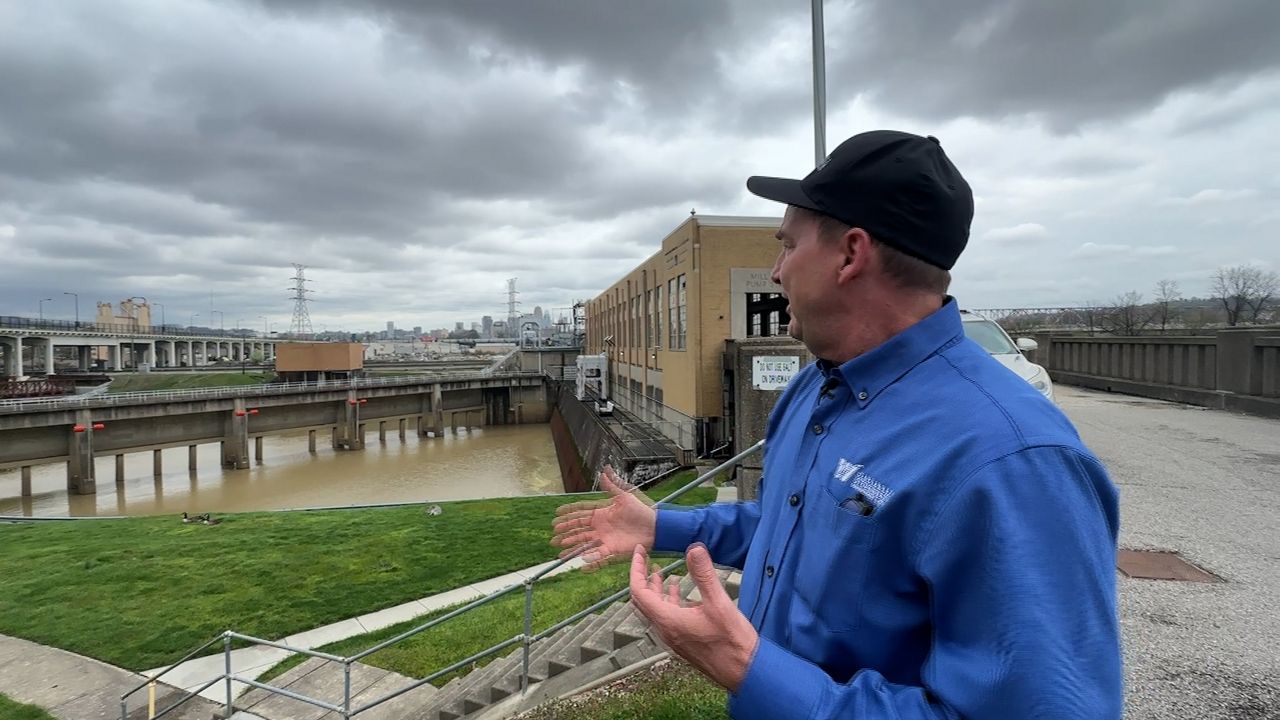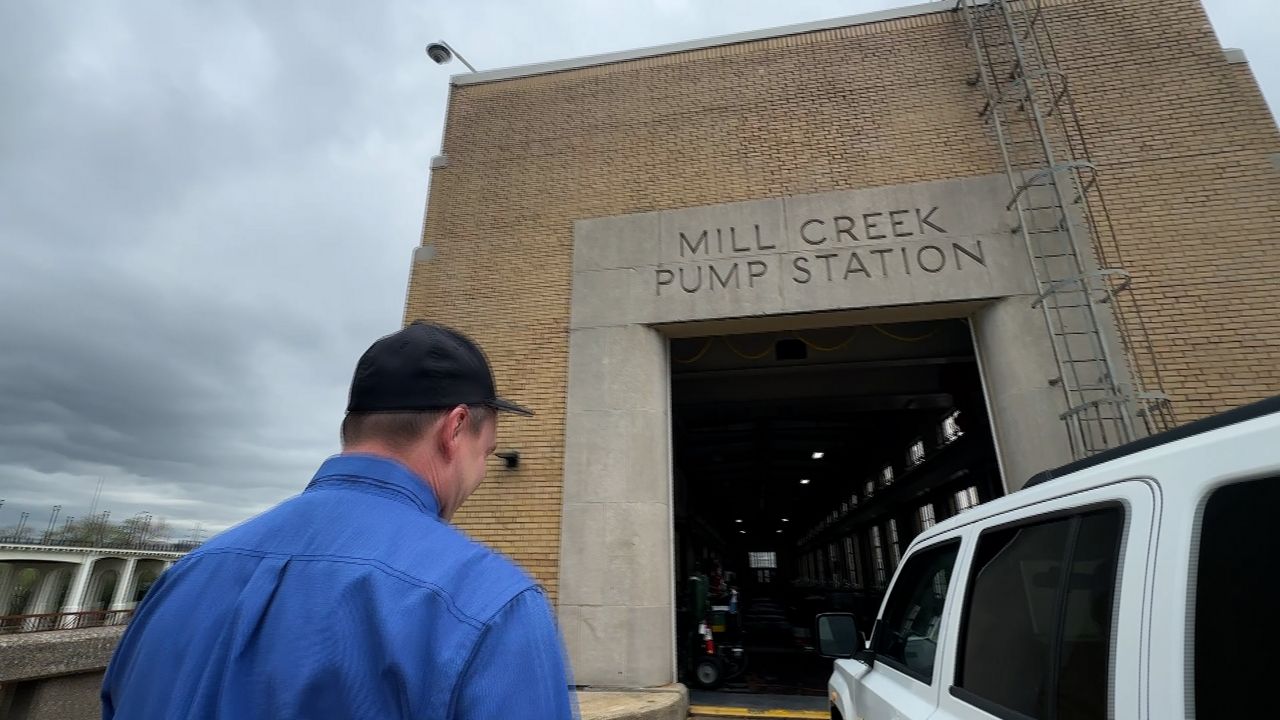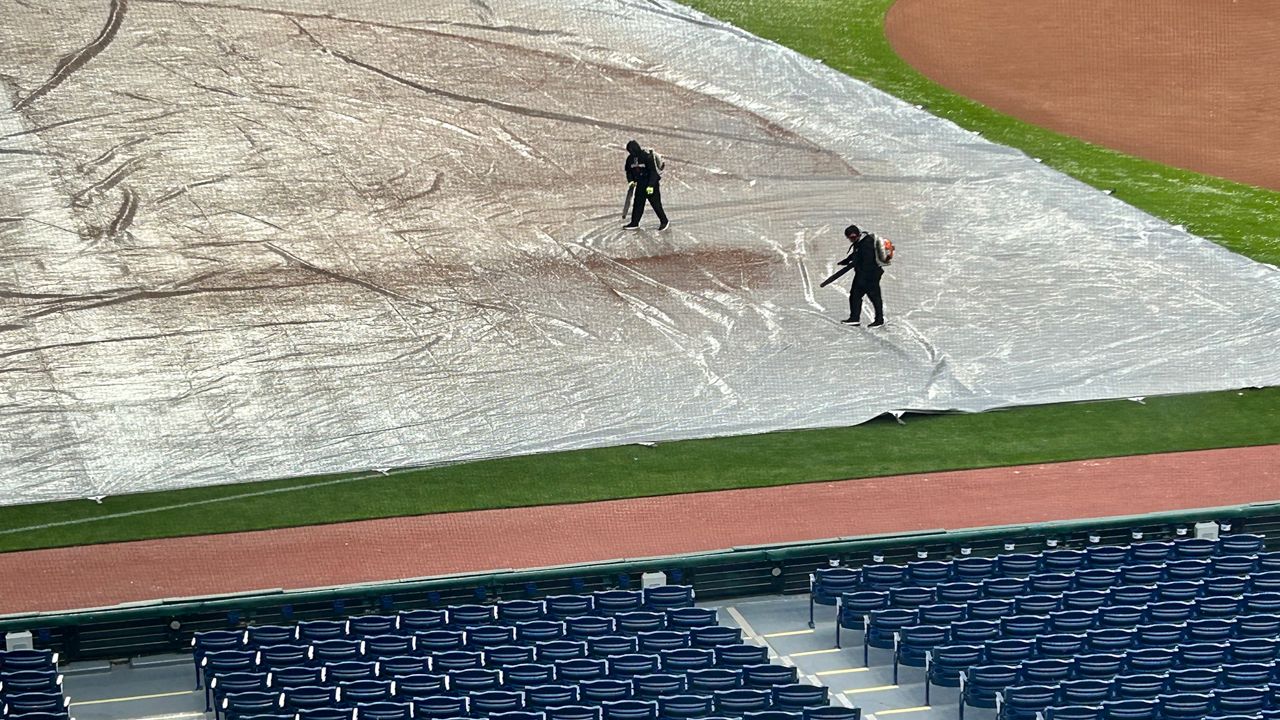CINCINNATI — Preparations continue in Cincinnati with more rain on the way. Flood gates along the Ohio River are being installed to keep critical infrastructure safe.
Eric Saylor, Cincinnati’s storm water management engineer, doesn’t get much sleep during major rain events like this one.
“I will probably get very little sleep between now and Monday morning," Saylor said with a laugh.
That’s because he and his team are busy doing everything they can to keep the city safe, which includes installing flood gates like this one which took nearly eight hours to install.

“This gate actually doesn't have to go up until 55 feet, which we are not at now, but given the forecast and given the rain, we wanted our crews to put it up in dry weather condition," Saylor said. "And we don't take risk with things like this because we want to get it up as early as possible.”
The severe weather this week has already gotten the best of some businesses and nonprofits like The Caring Place, a food pantry in Pleasant Ridge. Volunteers walked in Tuesday morning to water throughout the pantry.
Sharifah Tafari, the executive director of the pantry, says it didn’t come as a huge surprise considering this has happened before.

“Surprised at the expanse of it, but not surprised that it happened because it happened on Tuesday from the weekend rain," Tafari said.
But those instances are why Saylor does what he does. Here at the Mill Creek Barrier Dam, the largest in Cincinnati, it’s a big decision whether to drop the barriers or not.

“Mill Creek comes this way, flows to the mighty Ohio. We put the bulkheads down and then the water goes into the station and then we pump it right there into the Ohio,” Saylor explained of the dam.
But it’s another piece of the puzzle during flood season- and is something Saylor says will most likely be used in the next few days.
“If this treatment plan does not function, that treatment plan is under water, the railroad lines are under water,” he said. “So it is millions and millions of dollars of infrastructure that is damaged. It’s one of the most critical pieces of infrastructure the city owns and maintains.”











